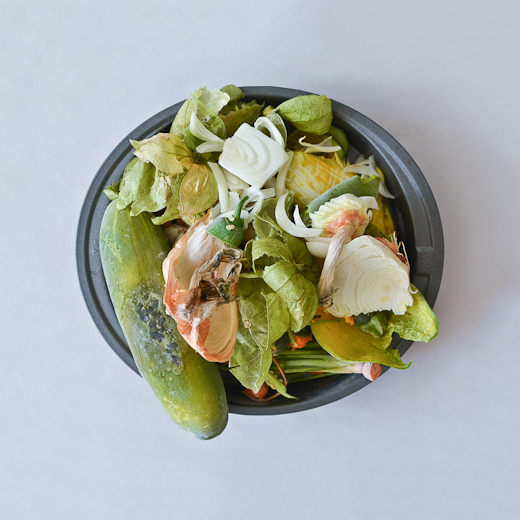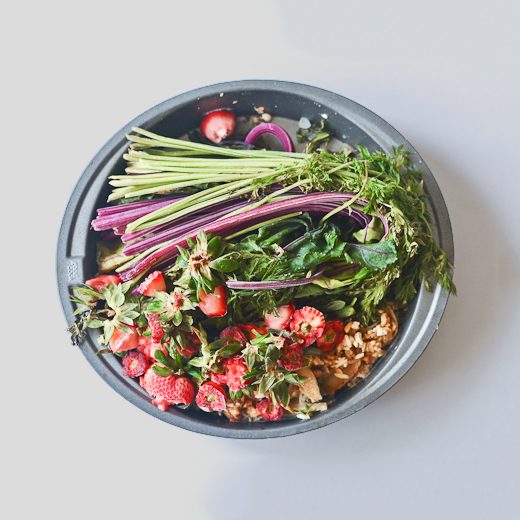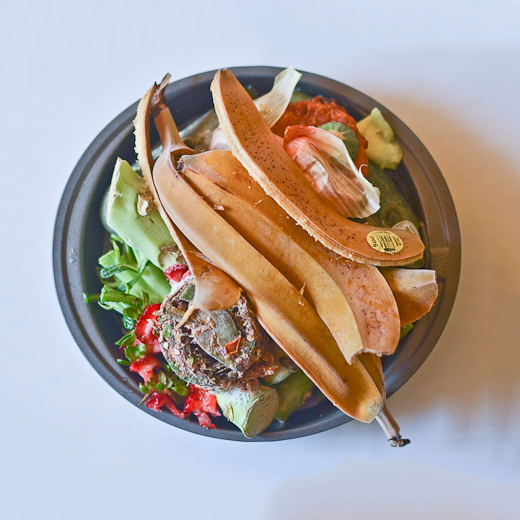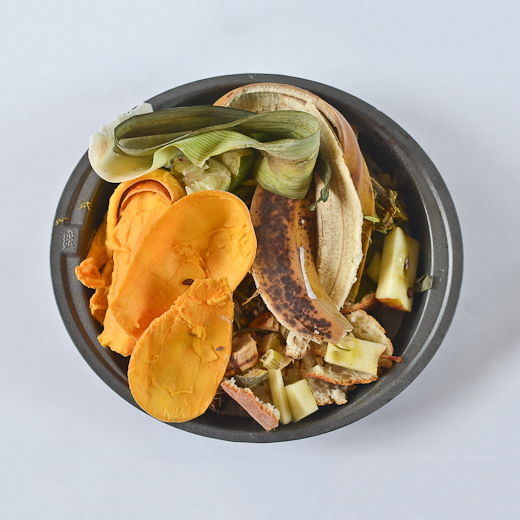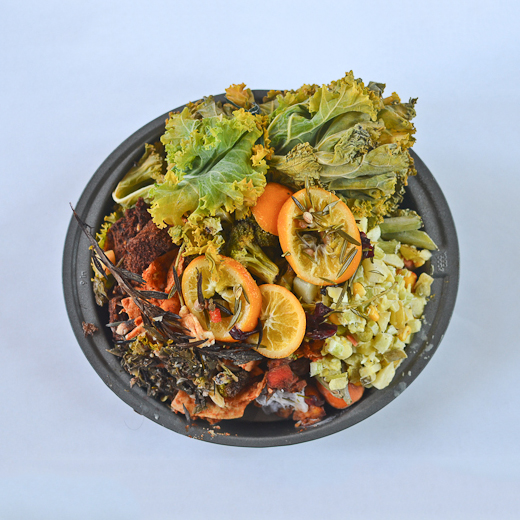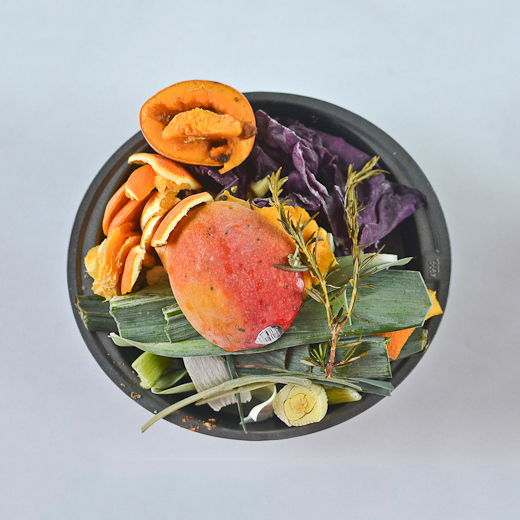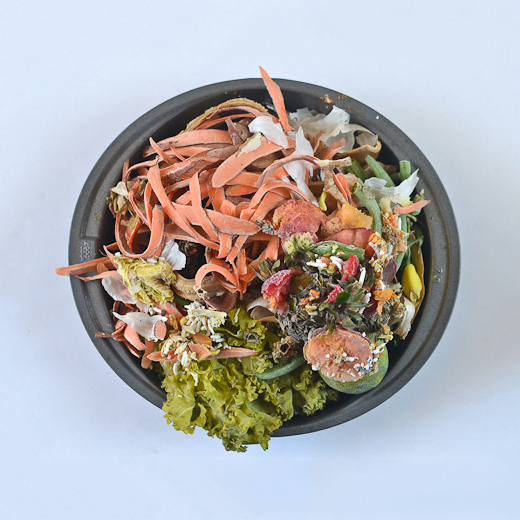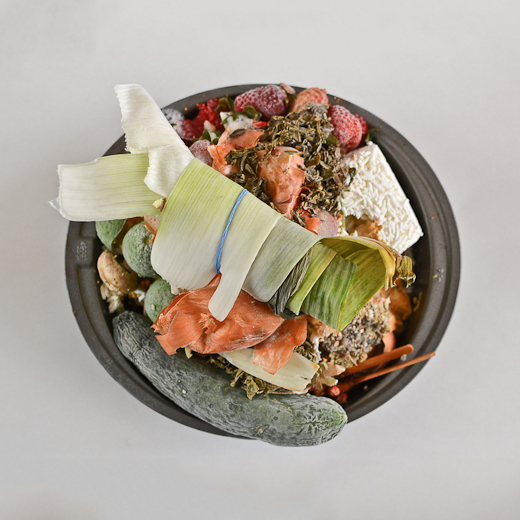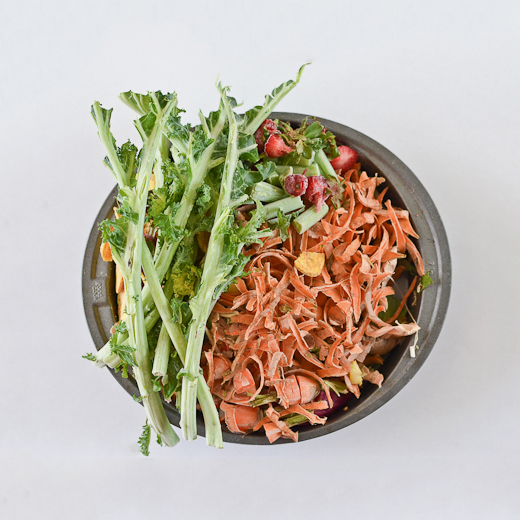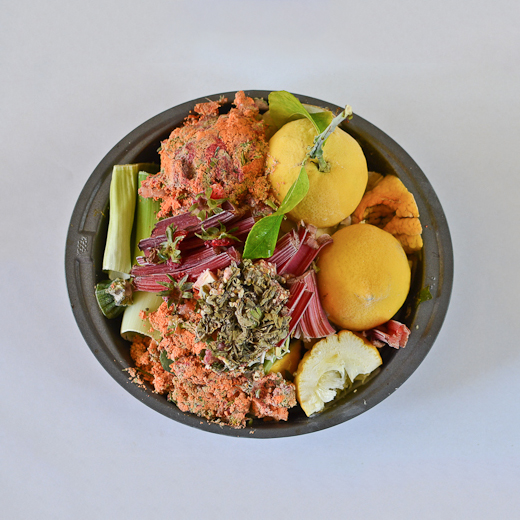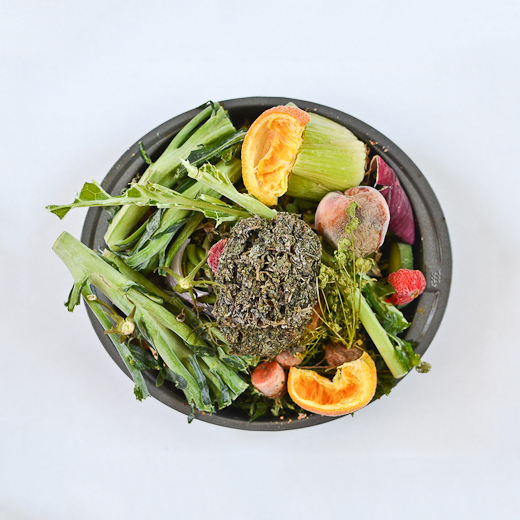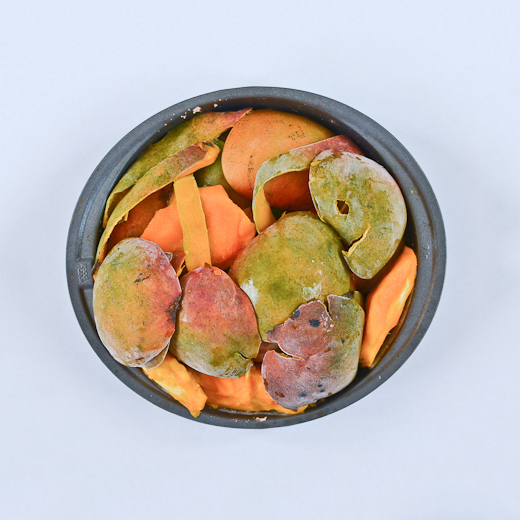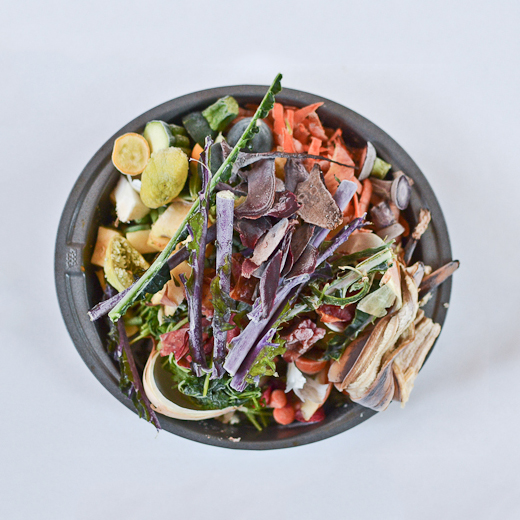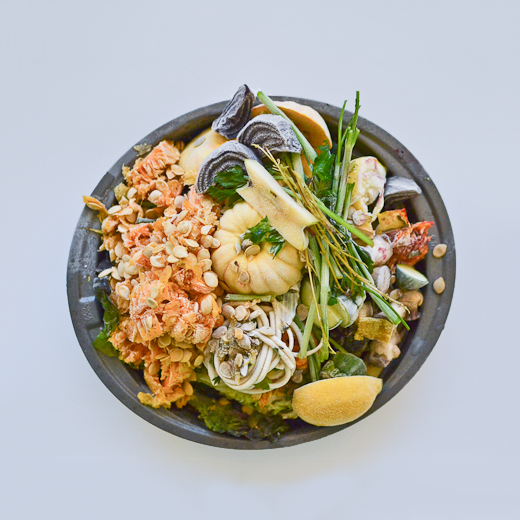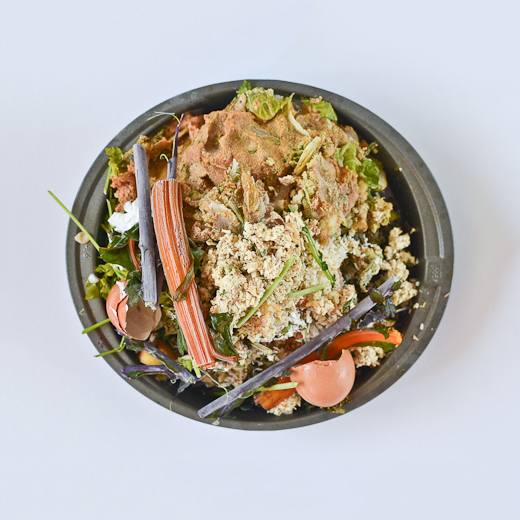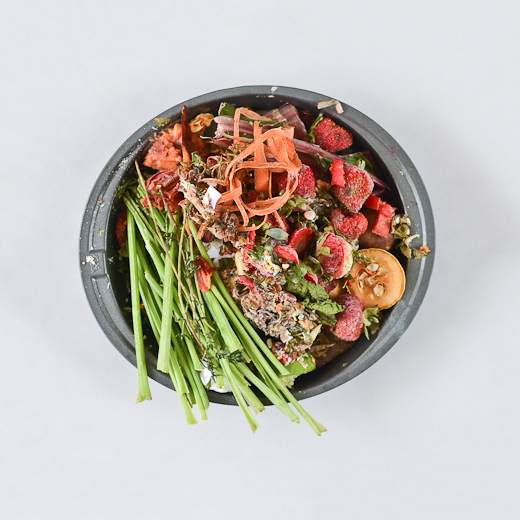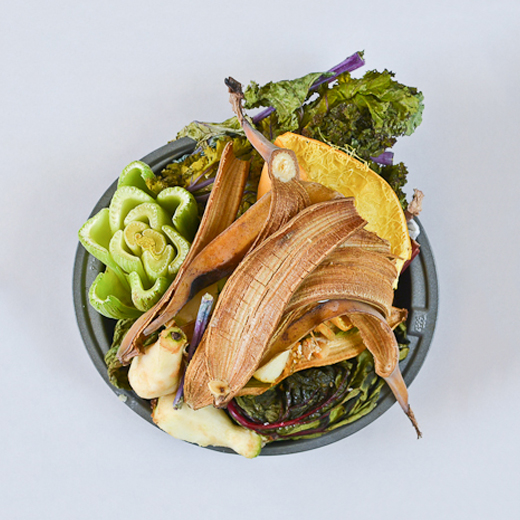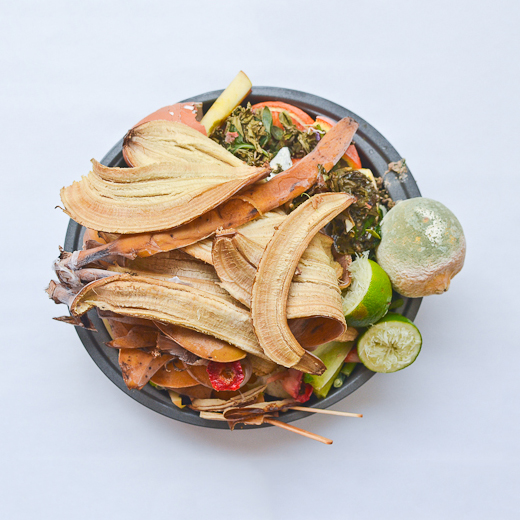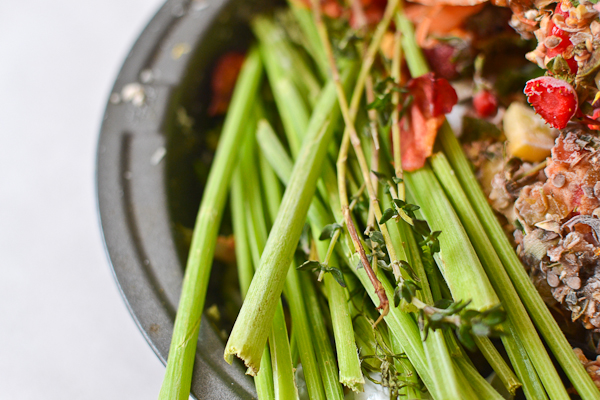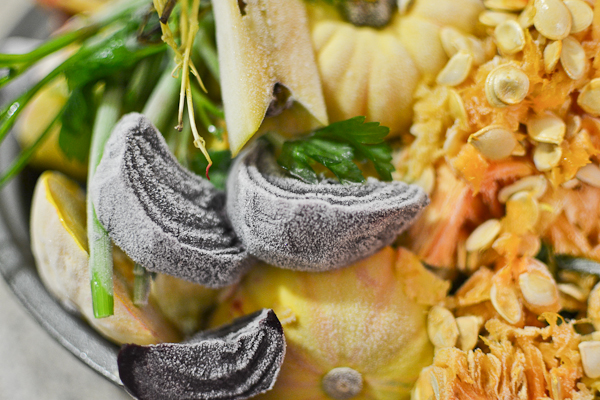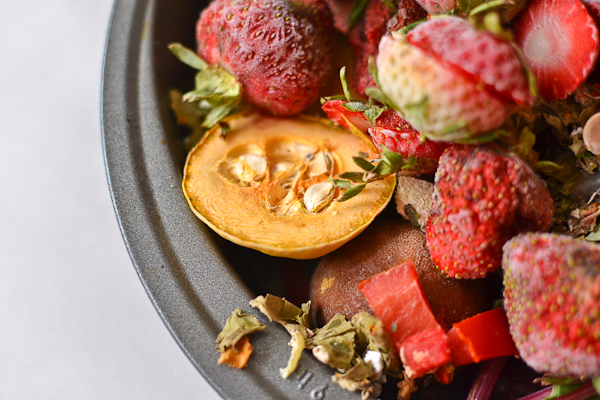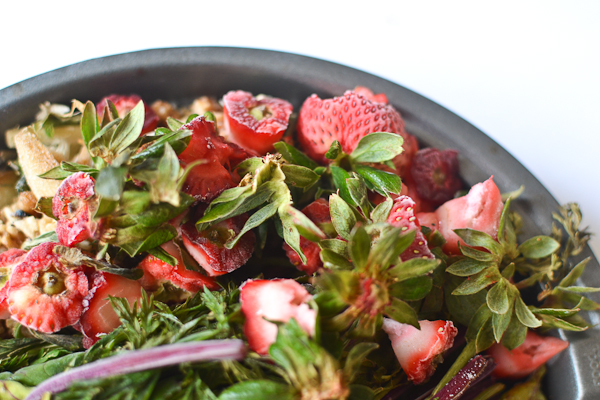For the last six months, I’ve been photographing my compost. Actually, my wannabe-compost. A strange thing to do, I’ll admit. Maybe the weirdest side project I’ve ever done. But these unusual photos tell a story: about city living, climate change, hunger, and the unusual things you can do with your freezer.
PART I
When I moved into my apartment complex this spring, the building manager told me that they don’t offer composting along with the trash/recycling pickup, even though Berkeley’s waste management will pick up compost, food scraps, and yard clippings along with trash. He said they tried composting before, but cancelled it because sometimes people threw the wrong things in the compost bins and it made a mess. But avoiding one mess just creates a much larger one: When food scraps hit the landfill, their decomposition emits methane gas which is so devastating to the environment, it makes carbon dioxide emissions sound fantastic. Methane is up to 30 times “better” at trapping greenhouse gases than carbon dioxide is. And in the US, food waste is the second highest component of landfills. But if food scraps are composted, they turn into nutrient rich soil and fertilizer instead. No brainer.
For the last 15 years, I’ve consistently composted, either when I lived in places that had land where I composted right on the earth, or in solo apartments that had pickup, or that one time I had an apartment with a balcony where I set up an outdoor worm bin. Hearing him say I couldn’t compost anymore was the equivalent of him saying that residents aren’t allowed to have toilets anymore because a few times a year the apartment complex needs to call a plumber.
I get one of those weekly CSA boxes of fruits/veggies and I primarily cook vegetarian at home which means that I usually have a decent amount of organic scraps. Logistically, throwing food scraps in the trash is a stinky, yucky mess. So I started keeping my food scraps in a pan in the freezer to avoid mold, smells, and fruit flies. But being forced to send them to a landfill to sit amongst broken lightbulbs, diapers and eons-lasting non-recyclable plastic really annoys me. And all 100+ people who live here are throwing their food waste in the garbage too. That’s a lot of banana peels.
Part II
Some out-of-town friends were staying with me for a few days and started talking about my freezer compost situation. I joked that it would be funny to take pictures of it as fancy food photography. What started as a single joke photo actually seemed like an interesting art project so I rolled with it to see what it would look like.
I was afraid that people would think I have mental problems because I was saving my compost in the freezer and photographing it, but other people have done similar things with their trash before (like that family who only throws away one handful of trash), so what the heck. When I was cooking, I just chucked the scraps in the freezer. Then when I took out the trash, I photographed it. Nothing was artfully arranged, I just shot it like it landed.
Part III
Taking photos of the food I was throwing away ended up serving several purposes:
1. It made me think about my eating habits, and ask myself some pointed questions.
How many fruits/veggies was I eating in a week? How long did it take me to fill up my freezer-compost pan? Why did some things end up in the compost that were edible? Repeatedly? What could I have done with it instead?
2. It made me think about how much food waste happens every day, and how I don’t like contributing to that.
The stats are bleak and nonsensical. 40% of food is thrown out in the US every year, or about $165 billion worth. The average American family throws away over 1,160 pounds of food a year. All of this uneaten food could feed 25 million Americans. There’s roughly 500,000 homeless folks in the U.S., going hungry on the streets. The inefficiency of these contrasting facts is downright cruel. And I don’t want to be a part of it anymore.
3. It made me think about the waste associated with high-end food photography.
I have a friend who does a lot of professional food photography and she was saying that while the food looks good in the photo, you would never really want to eat it because it had been sitting out so long, and had been touched and manipulated so much. Another friend of mine used to work in the photo studio of a multinational consumer food company and he described how, in a single shoot for an apple pie, they would have to bake 30 pies, just to make sure they could pick and photograph the most attractive one. Guess what happened to the other 29. (Hint: you can’t eat something that’s been sprayed with shellac.)
A lot of the food in food photography isn’t even food — Elmers Glue under the cereal, ScotchGuard sprayed on the pancakes so the syrup slides off, clear spray enamel on fresh fruit, and soap bubbles on top of the cappuccino/soda. Yum!
So here we are
I have joined the ranks of those who practice the unusual photography genre called compost art (didn’t even know this was a thing). I actually think some of the photos are beautiful in a melancholy way. I’m grateful that I had access to so much healthy food. However, I regret the waste of things that were edible. I have had to face the fact that apparently I do not like cucumbers so I should stop bringing them into the house.
One of the best things to come out of this project is how strongly it made me realize that I don’t want to waste any more edible food. I have a specific memory and story about every piece of food that ended up in these photos, because I had to face what went wrong. I’ve had to confront my own wasted opportunities:
- my horror at finding mold on the ends of collapsing strawberries that I had such delicious intentions for
- a bag of limes that turned into rocks on the counter
- a stump of Hawaiian bread that dried out and turned into concrete
- kale that turned yellow and black after I neglected it for two days too many
- leftover beets that I wanted to toss in a smoothie but which desiccated in a shoved-too-far-away tupperware in the fridge
- immaculate lemons whose undersides grew a tundra of gray fuzz while lounging in the fruit bowl
I’m so embarrassed about the things I let go to waste, but I’m putting myself on blast publicly because I want to encourage others to think about their own food waste behaviors too and join me in something better.
I’m grateful for what this experiment taught me and how it’s changed my behavior. For example, a couple months into the experiment, I started to cook extra meals when I felt like I had produce that might go bad soon; I take the hot meals and give them away to homeless folks around here, of which there are many. I really love sharing food. At the end of 2014, I won a month’s worth of hot meal deliveries in a Spoonrocket contest and I gave away all the meals to homeless folks in San Francisco. Photographing Wasted Opportunity gave me a more personal way to keep that up that practice of giving away meals to hungry folks. (To be clear: I was not giving away my compost scraps; I was cooking extra meals and giving those away.)
Some of the photos in Wasted Opportunity are grotesque, and some of them are beautiful, but what they all have in common is that everything you see is currently emitting methane gas into our already overheated atmosphere. They're doing so at some bay area landfill instead of being turned into nutrient-dense compost at the 124-acre compost site in the Central Valley that handles Berkeley’s green waste. This fact makes all of these photos exquisitely sad for me.
And I’m only one person.
I think that if everyone had to really confront how much food they throw away in just one month, it might result in a lot less waste, a cleaner and cooler planetary atmosphere, and a lot less local hunger. Give it a shot in 2016: notice what you waste, see if you can reuse it, or find ways to share food. And if you have the ability to compost — please do it. I’m still mad that this apartment building makes its residents throw food scraps in the dumpster, but with a few tweaks, I’m working to put less and less of it in there.
Note: I didn’t freeze/photograph every single piece of food I threw away during this ~6 month window. Some stuff met its end in the refrigerator at work. Some stuff died a lonely death in the back of the fridge and just had to go immediately once it was exhumed. And some stuff I didn’t freeze because I was taking out the trash right away. But this is the bulk of it. I rarely ran the garbage disposal, so even the tiny yucky bits that end up in the kitchen sink’s drainage screen made it to some of the photo shoots. Ooh la la.




